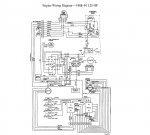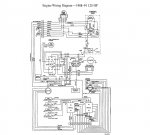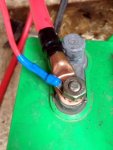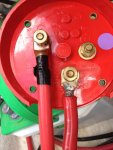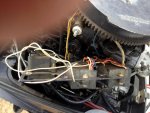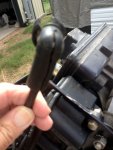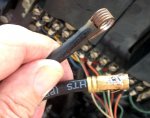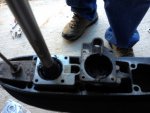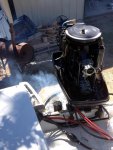Steverino74
Seaman Apprentice
- Joined
- Jul 29, 2014
- Messages
- 44
I just bought an 87 Bayliner with a 125 Force on it. A friend with cancer sold it to me at what I consider a very reasonable price. It needs TLC here and there, but he told me he took the boat to a mechanic after non-starting and was told "It's an electrical issue". It sat in his shed for a few years after that until I recently pulled it out.
After researching I am seeing these are not the most respected engines for quality? I am worried about parts availability?
I am pretty good with electrical, so with the help of the nice SELOC maintenance manual, I am fairly confident I can figure it out eventually. But I am open to experience on these and advice. I already looked at fuses up front and they are the old glass type, and all looked ok on a quick visual.
The battery is an Interstate Deep Cycle but who knows when it was last charged. So I put my C-Tek 3300 to work on it and crossing my fingers. It has a dual battery switch, but only one battery, so I may have to remedy that in time.
I know I need to replace all rubber and rebuild the carb with the Ethanol in gas these days.
Where's a good place to get parts? On-line works for me, but I am fairly close to Austin, Tx.
Any other advice would be appreciated.
Thanks! Steve
After researching I am seeing these are not the most respected engines for quality? I am worried about parts availability?
I am pretty good with electrical, so with the help of the nice SELOC maintenance manual, I am fairly confident I can figure it out eventually. But I am open to experience on these and advice. I already looked at fuses up front and they are the old glass type, and all looked ok on a quick visual.
The battery is an Interstate Deep Cycle but who knows when it was last charged. So I put my C-Tek 3300 to work on it and crossing my fingers. It has a dual battery switch, but only one battery, so I may have to remedy that in time.
I know I need to replace all rubber and rebuild the carb with the Ethanol in gas these days.
Where's a good place to get parts? On-line works for me, but I am fairly close to Austin, Tx.
Any other advice would be appreciated.
Thanks! Steve




















